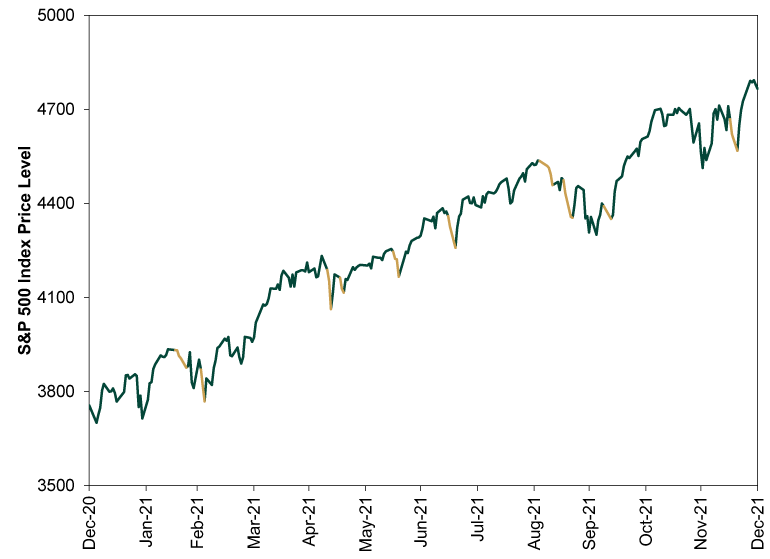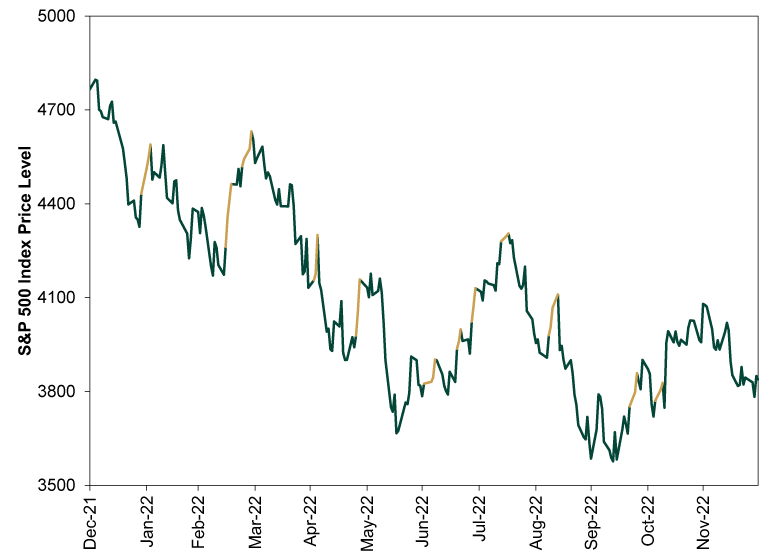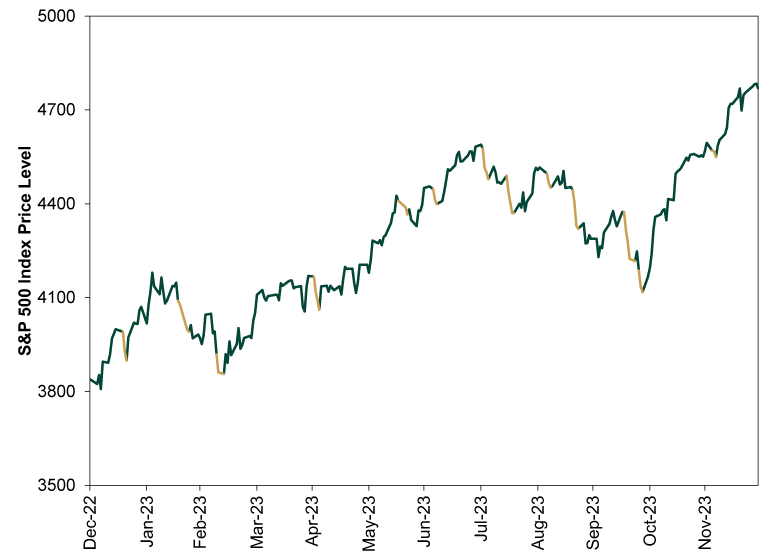Personal Wealth Management / Market Volatility
Monday’s Market Mood Swing
Up or down, short-term swings are meaningless.
Headlines wrapping Monday’s market movement suggest investors coast to coast must be breathing easier after the S&P 500 rose 1.4% in price terms Monday, bringing it a whisker away (-0.1%) from flat year to date.[i] Folks, we are bullish, but this take extends a trend of reading far too much into short-term wiggles. We suggest taking a brisk winter walk instead of getting sucked in.
Don’t get us wrong, Monday’s jump was nice. But in the grand scheme of things, it is as meaningless as the rocky week that preceded it. If you look at any chart of stock returns over time, you will see they don’t move in straight lines. They are wiggly and wild, with zigs and zags small and large. A few down days punctuated by a nice up day? Normal. A string of good days followed by a bad day or three? Normal. Unless you are in the business of trying to time these moves precisely to earn tiny spreads here and there, it is all meaningless.
For fun and illustration, consider a look back at the last three years. First is 2021, a bull market year. Second is 2022, which included a bear market from January through mid-October. Rounding out the pack is 2023, a bull market year with a mid-year correction. In the two bull market years, we highlighted all stretches of three or more consecutive down days. In the bear market year, we highlighted spans of three or more consecutive up days. As you will see, none of it bears much rhyme or reason.
Exhibit 1: 2021’s Volatility Up Close

Source: FactSet, as of 1/8/2024. S&P 500 price index, 12/31/2020 – 12/31/2021.
Exhibit 2: 2022’s Volatility Up Close

Source: FactSet, as of 1/8/2024. S&P 500 price index, 12/31/2021 – 12/31/2022.
Exhibit 3: 2023’s Volatility Up Close

Source: FactSet, as of 1/8/2024. S&P 500 price index, 12/31/2022 – 12/31/2023.
In 2021, stocks endured both isolated and clustered speedbumps. Big up days happened during or after some of those clusters. But big up days also happened in good clusters. In 2022, the bear market included several good clusters, but they were false starts—the mirror-universe version of bull markets’ frequent temporary setbacks. And in 2023, the down stretches didn’t discriminate between the correction and the rallies that sandwiched it. To us, it all seems like a great deal of noise. Seeking signals in the static strikes us as not just a waste of time, but potentially a trigger to make counterproductive, knee-jerk reactions. Whether the motivation is fear or greed, basing trades on what markets just did is a pretty flimsy foundation.
Thankfully, markets’ noise eventually evens out. In our view, the great challenge for investors is not predicting it, but learning to tune it out and not get hung up on the good or bad days or weeks. All of this volatility, over time, melts into the returns that bring you to your long-term goals. So we think it makes most sense to focus on those goals instead. Are you investing for long-term growth? Think of the zigs and zags not as an impediment to those goals, but the toll you pay to get there. Volatility is part of the tradeoff for stocks’ higher long-term returns relative to other asset classes, and it cuts both ways, up and down. Even in a good year—which is what we expect in 2024. But the one thing it doesn’t do is predict anything.
[i] Source: FactSet, as of 1/8/2024.
If you would like to contact the editors responsible for this article, please message MarketMinder directly.
*The content contained in this article represents only the opinions and viewpoints of the Fisher Investments editorial staff.
Get a weekly roundup of our market insights
Sign up for our weekly e-mail newsletter.

You Imagine Your Future. We Help You Get There.
Are you ready to start your journey to a better financial future?

Where Might the Market Go Next?
Confidently tackle the market’s ups and downs with independent research and analysis that tells you where we think stocks are headed—and why.





